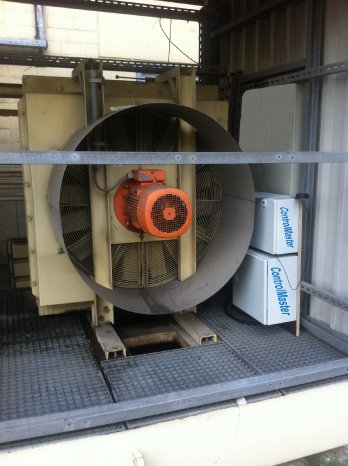Previously, the finned heat exchangers were primarily scheduled for cleaning based on visual inspection. MPEB had already commissioned mycon's sister company, Kipp Umwelttechnik, which is involved with industry service, several times to handle the task of cleaning.
Until now, determining energy cost savings for finned heat exchangers was difficult and monitoring the heat exchangers was often complex. While the difference between a clean and a dirty system is usually clearly visible, determining the exact level of inefficiency caused by build-up is very vague. For example, a heat exchanger that may appear to be only slightly soiled can exhibit significantly lower cooling efficiency if the pollutant material has a high level of temperature transfer resistance.
An experienced eye can recognize the reduced run times of the rotors after cleaning the heat exchanger, but an exact calculation of the energy savings and energy costs is very difficult due to the often highly fluctuating load of the cooling system and constantly changing operating conditions. Estimating the energy cost savings on the basis of differential pressure values and/or temperature values usually cannot detect the real condition of the system and rarely leads to useful results.
Instead, the system developed by mycon uses a new, self-learning measurement method. It determines the most efficient schedule to clean the heat exchangers for optimal energy efficiency. A complex process continuously collects and processes the required data. The measurements are digitally prepared and evaluated by a complex algorithm. The new system also saves the resulting cleaning costs and determines the expected amortization period necessary for determining the cleaning time. This allows the cleaning performance to be efficiently determined. The measurement system continuously compares the energy costs, which inevitably increase over the exchanger’s run time, with the costs of cleaning in order to optimally adjust and determine the cleaning schedule at a time that makes the best ecological and economic sense.


